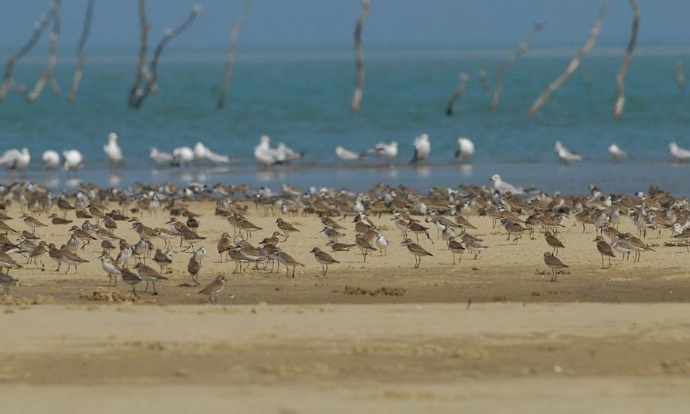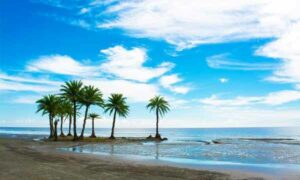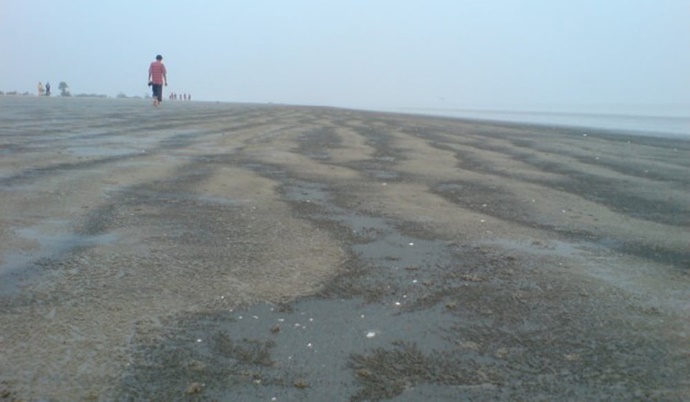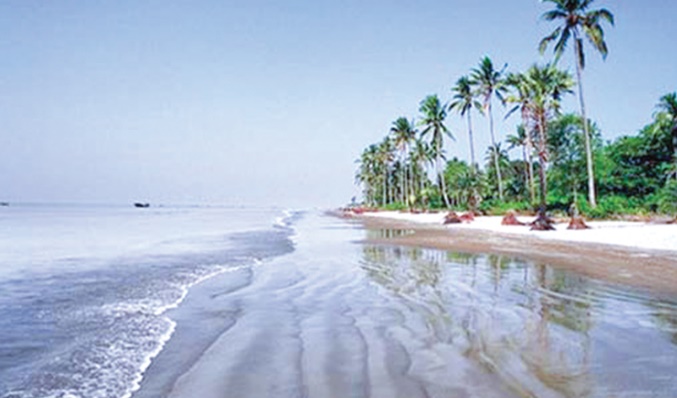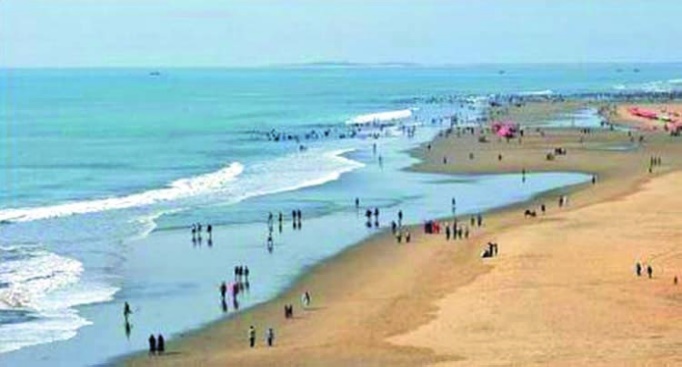Sandy Shore
From a global perspective, sandy shores appear as sandy beaches which dominate most of the coastal ecosystem (Felix et al., 2016), providing shelter to unique and diversified animals and plants that are crucial for the ecosystem (Rodil & Lastra, 2022). They are widely characterized by the presence of sands, waves and tidal regimes, with steep and narrow slopes and coarse grain sediments (Reflective) to wide and flat slopes and fine grain sediment (Dissipative) (Schlacher et al., 2008; Tewfik et al., 2016). Low amount of originated primary production as well as drifted macrophytes are found in sandy beaches that consequently supply food and shelter to beach macroinvertebrates (Schooler et al., 2017). Barboza & Defeo (2015) reported that the physical attributes of sandy beaches such as sand grain size, beach slope, tidal range and temperature have an impact on species richness and distribution.
The communities of sandy beach are influenced by several environmental factors including wave climate, tidal regime and sediment source which interact to create a gradient of beach morphology (Tewfik et al., 201). The porous quality of the sand helps to provide an exceptional environment for incubating system as well as filtering water, mineralizing organic matter and recycling nutrients (Schlacher et al., 2008). Therefore, beaches play a significant role in supporting a wide variety of organisms, from filter feeders such as crustaceans, polychaete worms, turtles to predators and scavenger crabs and shorebirds. Some key characteristics that help invertebrates adapt to the sandy beach environment include burrowing, flexibility, rhythmic behavior and ability to survive in rapidly changing environment (Schooler et al., 2017).
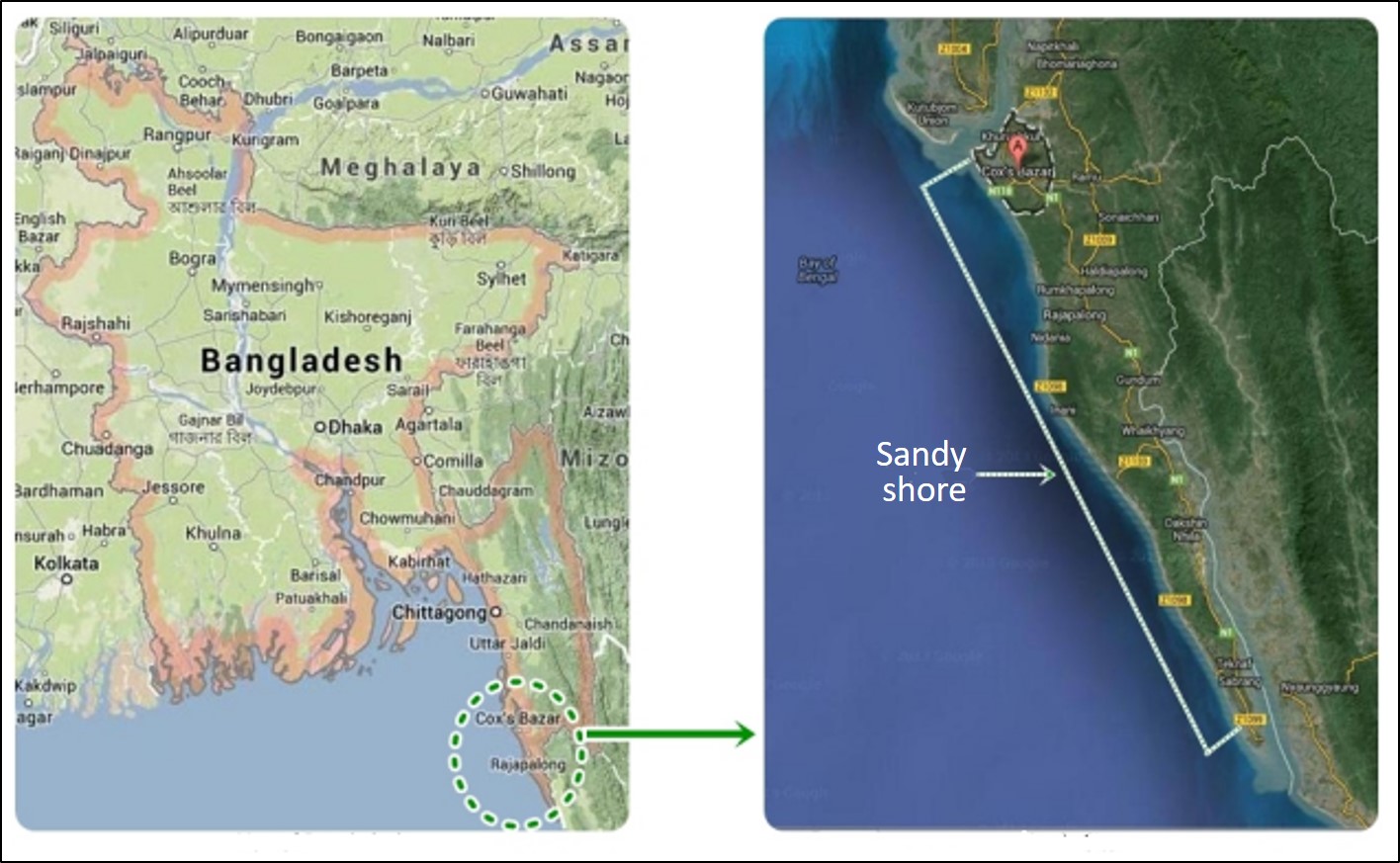
Figure 1: Sandy beach of Cox’s Bazar, Bangladesh (modified from Hossain et al., 2016)
The 710-km long coastline in Bangladesh is divided into three distinct geomorphological regions, viz., western zone, central zone, and eastern zone (Ahsan, 2013). The western and central zones are very flat and low, whereas the eastern coastal zone boasts the beautiful tourist spot of Cox’s Bazar, which is famous for its uninterrupted longest sandy sea beaches of the world. The sandy beach of Cox’s Bazar extends the length from Moheshkhali Channel in the north to the tip of the Teknaf Peninsula in the south, a distance of some 75 km, with sand dunes and relatively sparse vegetation (Rashid, 2019). The coastal and marine waters of Bangladesh support sea turtles, namely Olive Ridley Turtle (Lepidochelys olivacea), Green Turtle (Chelonia mydas), Hawksbill Turtle (Eretmochelys imbricata), and Leatherback Turtle (Dermochelys coriacea), predominantly in the sandy beaches of Saint Martin Island and Sahporirdwip to Cox’s Bazar including Teknaf, Bordal, Kochopia, Inani, Monkhali, Sonadia Island, Kutubdia Island, Sandwip, Egg Island, Mandarbaria, Dubla Island as well as the sandy beaches of Sundarban area (Nishat et al., 2002; Shamsuddoha and Islam, 2016).
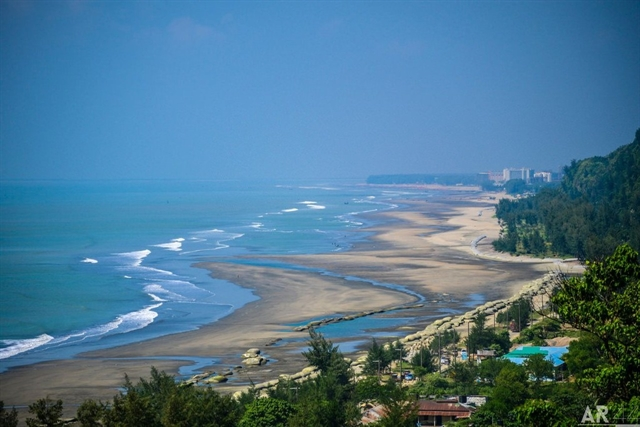
Figure 2: A view of Cox’s Bazar beach, the world longest unbroken natural sandy beach
Aside from different marine plants such as algae, seaweeds and kelps, significant vegetation in sandy beaches or sand dunes include Nil nishida (Vitex trifolia), Dopati lata (Ipomoea prescaprae), Baranda (Panicum repens) and Jhau (Casuarina littoreaa) (Nishat et al., 2002). Prominent amphibians i.e. common toad (Bufo melanostictus) and cricket frog (Limmonectes limnocharis) can also be found in these areas.
The coast of Bangladesh is considered as an ideal place for both shorebirds and migratory birds. So far, 98 species of shorebirds have been recorded, while 100 species of migratory shorebirds are found enjoying their over-wintering period in Bangladesh’s coast, such as Laggar falcon (Falco jugger), Oriental hobby (Falco severus) and Small pratincole (Glareola lacteal). The Sundarbans mangrove forest is possibly the best place for the over wintering of shore birds, annually hosting more than 200,000 migratory birds (Shamsuddoha and Islam, 2016).
Figure 3: Sonadia beach, Cox’s Beach |
Figure 4: Nijhum Dwip beach, Noakhali |
Figure 5: Kotka Beach, Khulna |
Figure 6: Kuakata Beach, Patuakhali |
Figure 7: Parki Beach, Chattogram |
Figure 8: Beach in Saint Martin’s Island |
The list of sea beaches (Wikipedia 2023) located in Bangladesh are given below:
A. Sea beaches in Chittagong Division:
I. Chittagong District: Patenga sea beach, Guliakhali Beach, Parki Beach
II. Cox’s Bazar District: Cox’s Bazar Beach, Inani Beach, Saint Martin’s Island, Teknaf Beach, Sonadia Beach,
III. Noakhali District: Nijhum Dwip
B. Sea beaches in Khulna Division
I. Khulna District: Kotka Beach,
II. Satkhira District: Mandarbaria Beach.
C. Sea beaches in Barisal Division
I. Bhola District: Tarua Beach
II. Patuakhali District: Kuakata Beach
References:
Ahsan ME (2013) Coastal Zone of Bangladesh: Fisheries Resources and its Potentials. LAP Lambert Academic Publishing, Germany.
Ali Reza AHM, Barua SP, Huq SMI, Khan ASM and Nishat A (2002) Bio-ecological Zones of Bangladesh. IUCN Bangladesh Country Office, Dhaka, Bangladesh, xii+ 131 pp.
Barboza FR and Defeo O (2015) Global diversity patterns in sandy beach macrofauna: a biogeographic analysis. Scientific Reports, 5(1). https://doi.org/10.1038/srep14515
Felix G, Marenzi RC, Polette M, and Netto SA (2016). Landscape visual quality and meiofauna biodiversity on sandy beaches. Environmental Management, 58(4), 682–693. https://doi.org/10.1007/s00267-016-0735-x
Hossain MK, Al-Mahmud MA, Mohajan B and Hossain MB (2016) Growth and Development of Casuarina equisetifolia in the Open Sandy Sea Coasts of Cox’s Bazar, Bangladesh. https://doi.org/10.13140/RG.2.1.1210.9680
Rashid SMA (2019) Coastal Biodiversity – A Review. Report prepared for Long Term Monitoring Research and Analysis of Bangladesh Coastal Zone. Pp.30.
Rodil IF and Lastra M (2022) Beyond physical control: Macrofauna community diversity across sandy beaches and its relationship with secondary production, Estuarine, Coastal and Shelf Science, 277, 108083. https://doi.org/10.1016/j.ecss.2022.108083
Schooler NK, Dugan JE, Hubbard DM and Straughan D (2017) Local scale processes drive long-term change in biodiversity of sandy beach ecosystems. Ecology and Evolution, 7(13), 4822–4834. https://doi.org/10.1002/ece3.3064
Shamsuddoha M and Islam MM (2016) Bangladesh national conservation strategy: coastal and marine resources, Ministry of Environment and Forest.
Schlacher TA, Schoeman DS, Dugan JE, Lastra M, Jones AR, Scapini F and McLachlan A (2008) Sandy beach ecosystems: key features, sampling issues, management challenges and climate change impacts. Marine Ecology, 29(s1), 70–90. https://doi.org/10.1111/j.1439-0485.2007.00204.x
Siddiqi NA (2001) Mangrove Forestry in Bangladesh. Chittagong: Institute of Forestry and Environmental Sciences, University of Chittagong, Bangladesh.
Tewfik A, Bell SS, McCann KS and Morrow K (2016) Predator Diet and Trophic Position Modified with Altered Habitat Morphology. PLoS ONE 11(1): e0147759. https://doi.org/10.1371/journal.pone.0147759
Wikipedia (2023) List of beaches in Bangladesh. [Accessed on 19 August, 2023] https://en.wikipedia.org/wiki/List_of_beaches_in_Bangladesh
